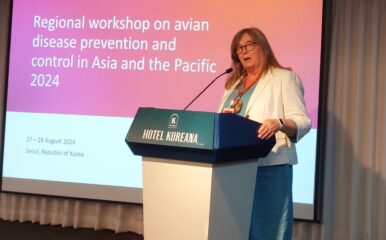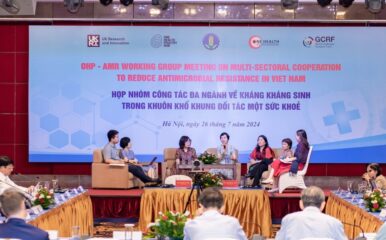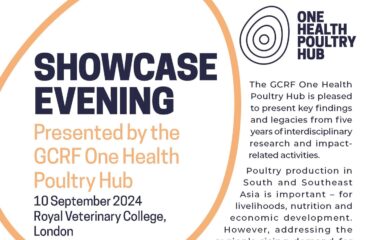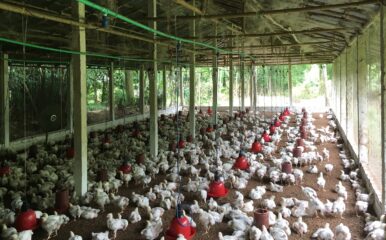
Hub findings support a more holistic approach to public health in Vietnam
Published on 23/03/2024
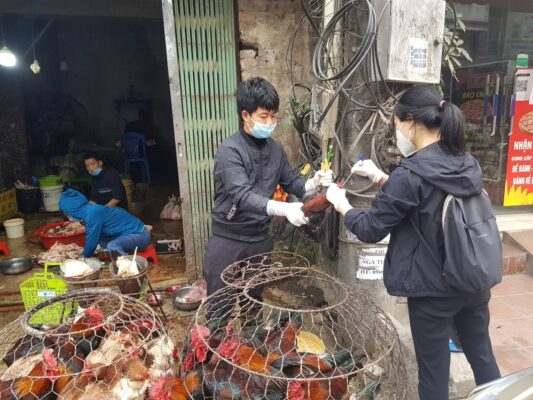
Dao Duy Tung
View this page in:
VietnameseResearch results from the One Health Poultry Hub Vietnam team have revealed the public health risks associated with the fast-developing poultry sector in the country – and the limitations of technical interventions alone for decreasing disease risk.
The findings were revealed at the Hub’s Vietnam Final Meeting held in Ha Long Bay, in northern Vietnam, with guests attending including a range of stakeholders from government, industry, the private sector, international organisations and research.
Key findings include:
- More than one in five chickens sampled in Vietnam’s markets and slaughtering facilities carried the virus for H9N2 avian influenza (‘bird flu’). While this sub-type of the virus is known as low pathogenic (causing only mild disease), it can lead to substantial production losses and it is often involved as a gene donor in the emergence of new virus variants. Hence it is considered a potential pandemic threat.
- Up to half of markets and slaughtering facilities tested positive for the bacteria Salmonella, which can cause food poisoning.
- One in three markets and slaughtering facilities tested positive for Campylobacter, which can also cause food poisoning.
A set of five policy briefs recommending ways forward for safer, more sustainable chicken production in Vietnam based on this important new evidence was launched at the meeting.
Vietnam’s poultry population grew at an average of 5.6% in the 10 years to 2020. It is projected to reach over 500 million in 2025, with 18 billion eggs produced annually. The intensification of poultry farming is known to present new opportunities for disease-causing microorganisms (pathogens) to emerge and spread, undermining efforts to make food production sustainable. It also increases the risk that pathogens will ‘spill over’ from birds to people leading to disease outbreaks – and potentially another pandemic.
Interdisciplinary scientists from the Hub collected and analysed thousands of biological samples from chickens on farms, in markets and at places of slaughter at field sites in Hanoi, Bac Giang, Hai Duong and Quang Ninh, in northern Vietnam.
They interviewed scores of farmers, traders, slaughterhouse workers and others in the poultry sector, and analysed policies and regulations guiding chicken and egg production and distribution, interviewing people working directly in these areas.
Other key findings from Vietnam unveiled at the meeting include:
- The prevalence of H9N2 avian influenza virus increased as birds travelled from farms to markets and slaughtering facilities by two- to five-fold.
- The highest prevalence of H9N2 avian influenza virus was found in informal slaughter points where almost one in three birds tested positive.
- Higher viral prevalence of H9N2 was observed in coloured broiler chickens compared to white broilers. Findings from repeated farm sampling showed that at least 20% of chicken batches are positive with H9N2 avian influenza virus. Therefore, most chickens raised in Vietnam are exposed to H9N2 at some point in their lives.
- Six percent of chickens from markets and slaughtering facilities contained levels of antibiotic residues above the limit set by the European Union. It is 60 to 120 times higher than levels found in the European Union (prevalence of 0.05-0.1%). This includes of antibiotics of importance in human healthcare, such as fluoroquinolones, whose use in animals is restricted.
The work of the One Health Poultry Hub has thrown light on the wide variety of livelihood strategies deployed by people in Vietnam in chicken farming and trading, revealing both diversification and specialisation. Critically, it has also shown how social, economic and cultural factors play a major role in determining who is at risk of getting ill, what that risk is and where it is greatest – enabling alternative, more effective strategies to reduce risk to be considered. (See examples in box below).
Towards more effective strategies to reduce disease risk
Example 1: Protecting farmers’ livelihoods.
Researchers found that the high volatility of chicken market prices can threaten farm profits. As a result, farmers must adapt their practices to keep their business afloat – and they often have to prioritise short-term goals, which favour reacting when disease issues arise, rather than take a longer view, which would see preventive measures adopted. Hence, action to protect farmers against market volatility may be more beneficial in the long run than a traditional public health approach such as more biosecurity training.
Example 2: Improving small-scale slaughtering.
Although the Government of Vietnam’s policy has long been to encourage the building and use of large, modern slaughterhouses, factors as diverse as land-use rights and culinary preferences mitigate against both the development and use of such facilities. Of more benefit to public health would be supporting small-scale slaughterers to operate in safe and biosecure conditions.
Policy briefs
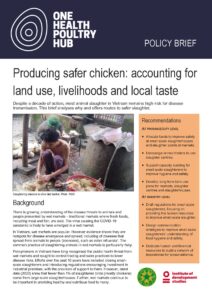 The five policy briefs produced by the Vietnam team offering recommendations drawn from the evidence cover the areas of: biosecurity, One Health, markets, slaughtering and gender:
The five policy briefs produced by the Vietnam team offering recommendations drawn from the evidence cover the areas of: biosecurity, One Health, markets, slaughtering and gender:
- Read: ‘How policy can support behaviour change for healthier poultry production’
- Read ‘Strengthening One Heath can keep diseases from poultry at bay’
- Read ‘Towards better managed markets for healthier poultry trading in Vietnam’
- Read ‘Producing safer chicken: accounting for land use, livelihoods and local taste’
- Read ‘Why gender matters in controlling infectious diseases from chickens’
Matthew Albon-Crouch, Agriculture, Food and Drink Attaché to the British Embassy, Hanoi, who attended the Final Meeting, said: “The UK remains committed to One Health both within the UK and in our international work, as is evident by the excellent work carried out in Vietnam since 2019 with the One Health Poultry Hub, carried out alongside our valued partners the Royal Veterinary College, CIRAD, the Department of Animal Health, Ministry of Agriculture and Rural Development, Vietnam; National Institute of Animal Sciences, Vietnam; National Institute of Hygiene and Epidemiology, Vietnam; National Institute of Veterinary Research, Vietnam; and Vietnam National University of Agriculture. Integrated approaches are essential for addressing cross-sector threats, including zoonotic diseases, agri-food system security and AMR.”

